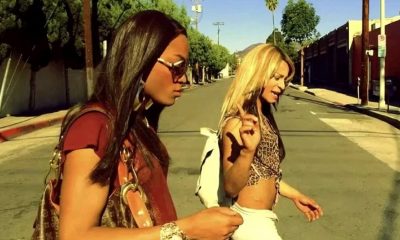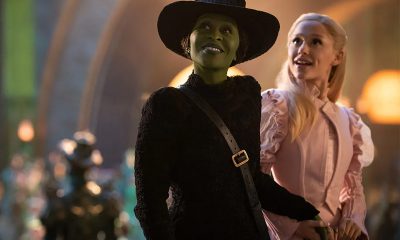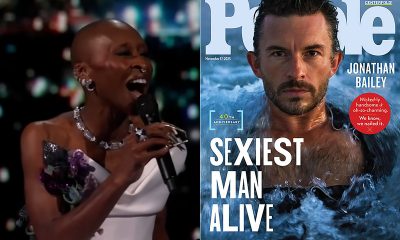Books
‘Call Me By Your Name’ sequel ‘Find Me’ evocative but lacks original’s power
Aciman keeps readers waiting masochistically while introducing new characters
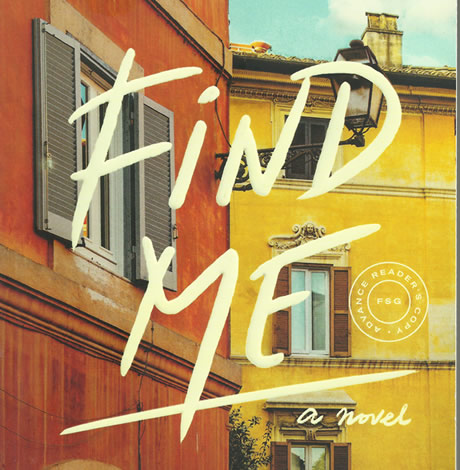
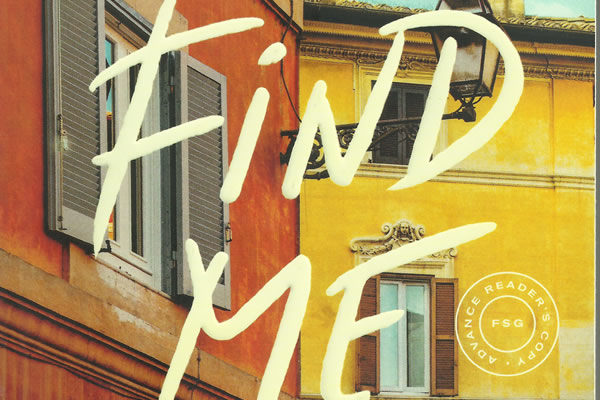
Unusually close father fixations, intense longing, the first flush of new romance that’s as scary as it is exciting, oh — and pretty much everybody here is bi. These are the major themes of “Find Me,” the sequel to “Call Me By Your Name.” Out Oct. 29, it continues the stories of the same-sex lovers Elio and Oliver that Andre Aciman introduced in his 2007 novel, memorably adapted into a 2017 movie with Timothee Chalamet and Armie Hammer.
I’m gonna stay pretty vague here and keep this as spoiler free as possible. If you want more on setting and premise, that’s easily available online. I went into this 100 percent blind and found the experience quite satisfying. “Call Me” director Luca Guadagino has said he’s planning a sequel of his own that would pick up a few years after the film (the book had an episodic final third not depicted in the movie) with Elio and Oliver navigating through the AIDS era. “Find Me” eschews that scenario altogether.
“Find Me” (**1/2 out of four) really takes its time gathering steam. I can’t necessarily say that’s a bad thing — one of “Call Me’s” biggest charms (in both book and film form) was its unusually languid pace, which so deftly captured the feel of a lazy Italian summer in which Elio and Oliver discovered each other. The pacing, though, worked much better in the earlier book as it was more suited to the timeline of the story. For Aciman to take his same good, ole’ time covering — as in the book’s first section — just a few days’ time, often feels laborious.
Not helping matters is how suddenly he’ll speed things up at whim. One particular same-sex romance in the middle section of the book dubbed “Cadenza” starts off with Aciman’s trademark detail in which no thought or action is deemed too fleeting or throwaway to not share. We’re treated to passages like: “… and then he asked if he could shampoo my hair, to which I said of course he could, and while the shampoo sat on my hair after he’d rubbed it in, I heard him wash himself, only then to feel his fingers rubbing and prodding my skull time and time again.”
That’s all fine and good — sensory detail can be powerful — but then just a few pages later: “Thursday that week we met again at nine at the same restaurant. Friday for lunch. And then for dinner as well. After breakfast that Saturday, he said he was going to drive to the country …” It’s such an extreme pick up of the pacing you almost feel literary whiplash.
Musical motifs form the book’s four sections — Tempo, Cadenza, Capriccio and Da Capo. Told in first person, it takes awhile in each section to figure out who’s speaking and where we are. And be ready to wait. I mean, really wait. Elio is first mentioned by name on page 107; Oliver is alluded to first on page 139. We first see his name on page 233.
As one plods through this leisurely pace, it’s always in the back of the mind whether or not Aciman will deliver a satisfying enough finale to have justified his long roundabouts. That’s, of course, up to each reader to decide, but I would have preferred not spending so much time in the lives and passions of new characters like Miranda (who figures heavily in Tempo, the longest section at a whopping 117 pages) and Michel, a central figure in “Cadenza.”
I was, at first, grateful to have been spared equally detailed prose about Micol, Oliver’s wife of many years, and how they ended up together. And yet, in retrospect, it would have yielded a bit more insight into Oliver, the more inscrutable of the central couple in “Call Me.” He ends up feeling like an afterthought here. Yes, we do get inside his head a bit in Capriccio and Da Capo, but it feels underdeveloped. In Cadenza, Aciman spends dozens of pages detailing Elio (a pianist) cracking a musical mystery (he’s given a handwritten score of murky origins). It’s mildly involving and ends up having some poignance, but ultimately factors — as is common with these types of red herring plot devices — way less in the grand scheme of the story than you’d think considering the attention it gets.
Aciman’s biggest failure here is his inability to differentiate his characters enough as they navigate the throes and blushes of new love. Told always in first person, they narrate things like, “we were staring at each other, and yet neither of us was saying anything. I knew that if I uttered another word I would break the spell, so we sat there, silent and staring, silent and staring, as if she too did not want to lift the spell.” By the end of the book, we’ve been treated to three rounds of this sort of thing from three different perspectives but the voices aren’t distinct enough to justify such poring over these mini-moments.
One might argue that’s the point — Aciman is noting how similar these mating rituals, this flirting is across the board, male or female, gay (more like bi) or straight. But he introduces, then tosses aside so cavalierly such major characters in his story while making us wait, almost masochistically, to discover the fate of Elio and Oliver, it ends up feeling more like a long trip around Robin Hood’s barn than the insightful dissection of human emotion he clearly intends it to be.
In fairness, do these things ever really work? One thinks, of course, of everything from the recent “The Testaments” (the sequel to “The Handmaid’s Tale”) to “Go Set a Watchman” (sequel to “To Kill a Mockingbird”). Are these projects ever terribly satisfying? What would that even look like in Elio and Oliver’s world? Do we want them together setting up house with a white picket fence? We’d hate him if he’d killed one of them off. What does one do with this conundrum?
Aciman has made a noble effort and the book is engrossing, even at his pace, which is actually saying something. But ultimately too much time is spent on rabbit trails with the goods way too rushed over in the final section (Da Capo is a mere 13 pages) to prove effective, much less as shatteringly evocative as “Call Me.”

This past year, you’ve often had to make do.
Saving money here, resources there, being inventive and innovative. It’s a talent you’ve honed, but isn’t it time to have the best? Yep, so grab these Ten Best of 2025 books for your new year pleasures.
Nonfiction
Health care is on everyone’s mind now, and “A Living: Working-Class Americans Talk to Their Doctor” by Michael D. Stein, M.D. (Melville House, $26.99) lets you peek into health care from the point of view of a doctor who treats “front-line workers” and those who experience poverty and homelessness. It’s shocking, an eye-opening book, a skinny, quick-to-read one that needs to be read now.
If you’ve been doing eldercare or caring for any loved one, then “How to Lose Your Mother: A Daughter’s Memoir” by Molly Jong-Fast (Viking, $28) needs to be in your plans for the coming year. It’s a memoir, but also a biography of Jong-Fast’s mother, Erica Jong, and the story of love, illness, and living through the chaos of serious disease with humor and grace. You’ll like this book especially if you were a fan of the author’s late mother.
Another memoir you can’t miss this year is “Between the Devil and the Deep Blue Sea: A Veteran’s Memoir” by Khadijah Queen (Legacy Lit, $30.00). It’s the story of one woman’s determination to get out of poverty and get an education, and to keep her head above water while she goes below water by joining the U.S. Navy. This is a story that will keep you glued to your seat, all the way through.
Self-improvement is something you might think about tackling in the new year, and “Replaceable You: Adventures in Human Anatomy” by Mary Roach (W.W. Norton & Company, $28.99) is a lighthearted – yet real and informative – look at the things inside and outside your body that can be replaced or changed. New nose job? Transplant, new dental work? Learn how you can become the Bionic Person in real life, and laugh while you’re doing it.
The science lover inside you will want to read “The Grave Robber: The Biggest Stolen Artifacts Case in FBI History and the Bureau’s Quest to Set Things Right” by Tim Carpenter (Harper Horizon, $29.99). A history lover will also want it, as will anyone with a craving for true crime, memoir, FBI procedural books, and travel books. It’s the story of a man who spent his life stealing objects from graves around the world, and an FBI agent’s obsession with securing the objects and returning them. It’s a fascinating read, with just a little bit of gruesome thrown in for fun.
Fiction
Speaking of a little bit of scariness, “Don’t Forget Me, Little Bessie” by James Lee Burke (Atlantic Monthly Press, $28) is the story of a girl named Bessie and her involvement with a cloven-hooved being who dogs her all her life. Set in still-wild south Texas, it’s a little bit western, part paranormal, and completely full of enjoyment.
“Evensong” by Stewart O’Nan (Atlantic Monthly Press, $28) is a layered novel of women’s friendships as they age together and support one another. The characters are warm and funny, there are a few times when your heart will sit in your throat, and you won’t be sorry you read it. It’s just plain irresistible.
If you need a dark tale for what’s left of a dark winter season, then “One of Us” by Dan Chaon (Henry Holt, $28), it it. It’s the story of twins who become orphaned when their Mama dies, ending up with a man who owns a traveling freak show, and who promises to care for them. But they can’t ever forget that a nefarious con man is looking for them; those kids can talk to one another without saying a word, and he’s going to make lots of money off them. This is a sharp, clever novel that fans of the “circus” genre shouldn’t miss.
“When the Harvest Comes” by Denne Michele Norris (Random House, $28) is a wonderful romance, a boy-meets-boy with a little spice and a lot of strife. Davis loves Everett but as their wedding day draws near, doubts begin to creep in. There’s homophobia on both sides of their families, and no small amount of racism. Beware that there’s some light explicitness in this book, but if you love a good love story, you’ll love this.
Another layered tale you’ll enjoy is “The Elements” by John Boyne (Henry Holt, $29.99), a twisty bunch of short stories that connect in a series of arcs that begin on an island near Dublin. It’s about love, death, revenge, and horror, a little like The Twilight Zone, but without the paranormal. You won’t want to put down, so be warned.
If you need more ideas, head to your local library or bookstore and ask the staff there for their favorite reads of 2025. They’ll fill your book bag and your new year with goodness.
Season’s readings!
The Blade may receive commissions from qualifying purchases made via this post.
Books
This gay author sees dead people

‘Are You There Spirit? It’s Me, Travis’
By Travis Holp
c.2025, Spiegel and Grau
$28/240 pages
Your dad sent you a penny the other day, minted in his birth year.
They say pennies from heaven are a sign of some sort, and that makes sense: You’ve been thinking about him a lot lately. Some might scoff, but the idea that a lost loved one is trying to tell you he’s OK is comforting. So read the new book, “Are You There, Spirit? It’s Me, Travis” by Travis Holp, and keep your eyes open.

Ever since he was a young boy growing up just outside Dayton, Ohio, Travis Holp wanted to be a writer. He also wanted to say that he was gay but his conservative parents believed his gayness was some sort of phase. That, and bullying made him hide who he was.
He also had to hide his nascent ability to communicate with people who had died, through an entity he calls “Spirit.” Eventually, though it left him with psychological scars and a drinking problem he’s since overcome, Holp was finally able to talk about his gayness and reveal his otherworldly ability.
Getting some people to believe that he speaks to the dead is still a tall order. Spirit helps naysayers, as well as Holp himself.
Spirit, he says, isn’t a person or an essence; Spirit is love. Spirit is a conduit of healing and energy, speaking through Holp in symbolic messages, feelings, and through synchronistic events. For example, Holp says coincidences are not coincidental; they’re ways for loved ones to convey messages of healing and energy.
To tap into your own healing Spirit, Holp says to trust yourself when you think you’ve received a healing message. Ignore your ego, but listen to your inner voice. Remember that Spirit won’t work on any fixed timeline, and its only purpose is to exist.
And keep in mind that “anything is possible because you are an unlimited being.”
You’re going to want very much to like “Are You There, Spirit? It’s Me, Travis.” The cover photo of author Travis Holp will make you smile. Alas, what you’ll find in here is hard to read, not due to content but for lack of focus.
What’s inside this book is scattered and repetitious. Love, energy, healing, faith, and fear are words that are used often – so often, in fact, that many pages feel like they’ve been recycled, or like you’ve entered a time warp that moves you backward, page-wise. Yes, there are uplifting accounts of readings that Holp has done with clients here, and they’re exciting but there are too few of them. When you find them, you’ll love them. They may make you cry. They’re exactly what you need, if you grieve. Just not enough.
This isn’t a terrible book, but its audience might be narrow. It absolutely needs more stories, less sentiment; more tales, less transcendence and if that’s your aim, go elsewhere. But if your soul cries for comfort after loss, “Are You There, Spirit? It’s Me, Travis” might still make sense.
The Blade may receive commissions from qualifying purchases made via this post.
Books
‘Dogs of Venice’ looks at love lost and rediscovered
A solo holiday trip to Italy takes unexpected turn

‘The Dogs of Venice’
By Steven Crowley
c.2025, G.P. Putnam & Sons
$20/65 pages
One person.
Two, 12, 20, you can still feel alone in a crowded room if it’s a place you don’t want to be. People say, though, that that’s no way to do the holidays; you’re supposed to Make Merry, even when your heart’s not in it. You’re supposed to feel happy, no matter what – even when, as in “The Dogs of Venice” by Steven Rowley, the Christmas tinsel seems tarnished.

Right up until the plane door closed, Paul held hope that Darren would decide to come on the vacation they’d planned for and saved for, for months.
Alas, Darren was a no-show, which was not really a surprise. Three weeks before the departure, he’d announced that their marriage wasn’t working for him anymore, and that he wanted a divorce. Paul had said he was going on the vacation anyhow. Why waste a perfectly good flight, or an already-booked B&B? He was going to Venice.
Darren just rolled his eyes.
Was that a metaphor for their entire marriage? Darren had always accused Paul of wanting too much. He indicated now that he felt stifled. Still, Darren’s unhappiness hit Paul broadside and so there was Paul, alone in a romantic Italian city, fighting with an espresso machine in a loft owned by someone who looked like a frozen-food spokeswoman.
He couldn’t speak or understand Italian very well. He didn’t know his way around, and he got lost often. But he felt anchored by a dog.
The dog – he liked to call it his dog – was a random stray, like so many others wandering around Venice unleashed, but this dog’s confidence and insouciant manner inspired Paul. If a dog could be like that, well, why couldn’t he?
He knew he wasn’t unlovable but solo holidays stunk and he hated his situation. Maybe the dog had a lesson to teach him: could you live a wonderful life without someone to watch out for, pet, and care for you?
Pick up “The Dogs of Venice,” and you might think to yourself that it won’t take long to read. At under 100 pages, you’d be right – which just gives you time to turn around and read it again. Because you’ll want to.
In the same way that you poke your tongue at a sore tooth, author Steven Rowley makes you want to remember what it’s like to be the victim of a dead romance. You can do it here safely because you simply know that Paul is too nice for it to last too long. No spoilers, though, except to say that this novel is about love – gone, resurrected, misdirected – and it unfolds in exactly the way you hope it will. All in a neat evening’s worth of reading. Perfect.
One thing to note: the Christmas setting is incidental and could just as well be any season, which means that this book is timely, no matter when you want it. So grab “The Dogs of Venice,” enjoy it twice with your book group, with your love, or read it alone.
The Blade may receive commissions from qualifying purchases made via this post.

